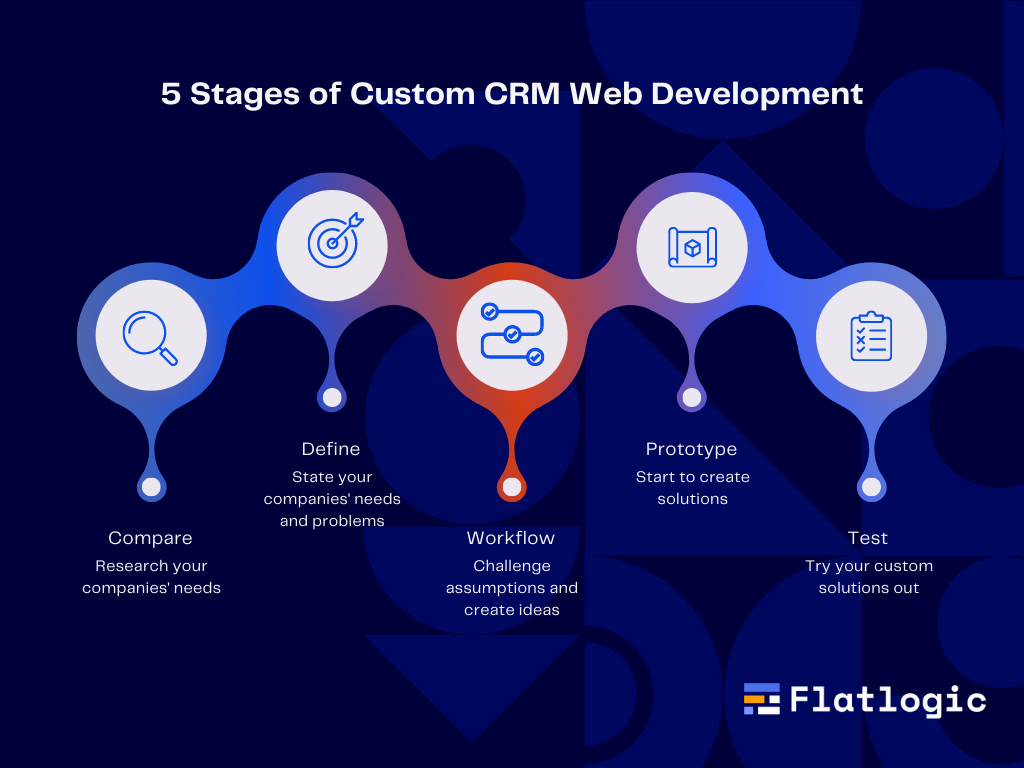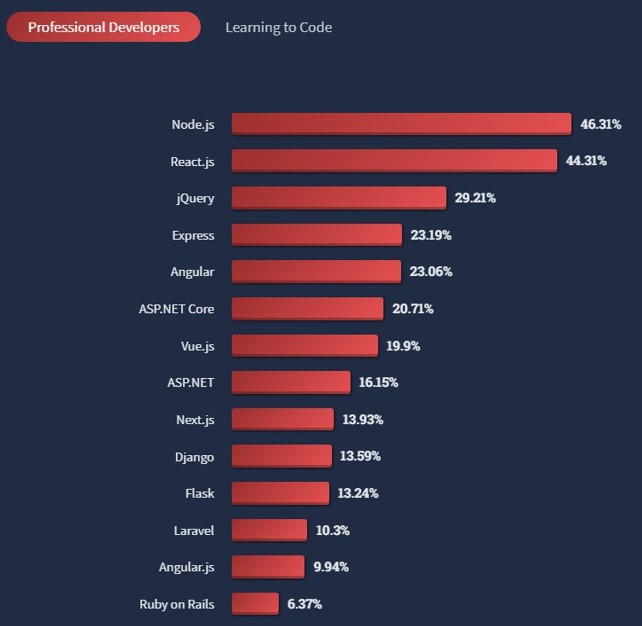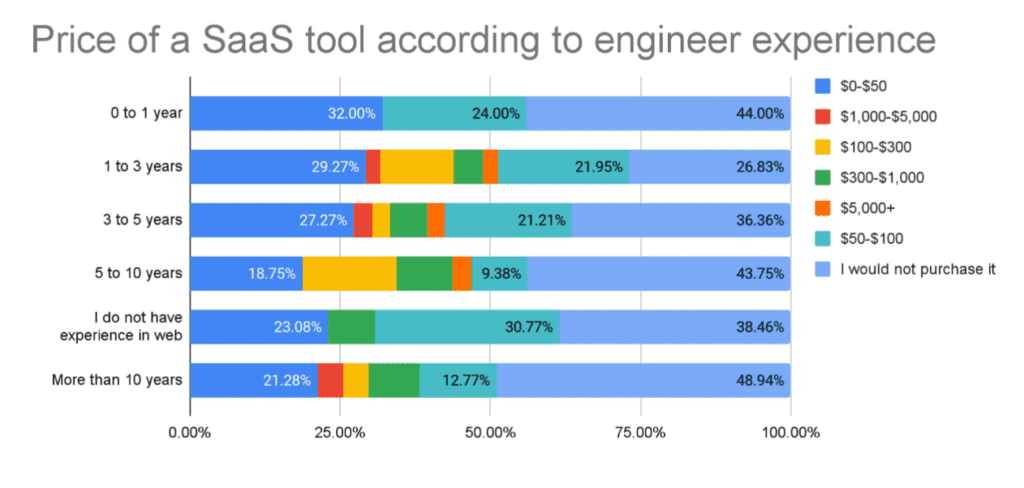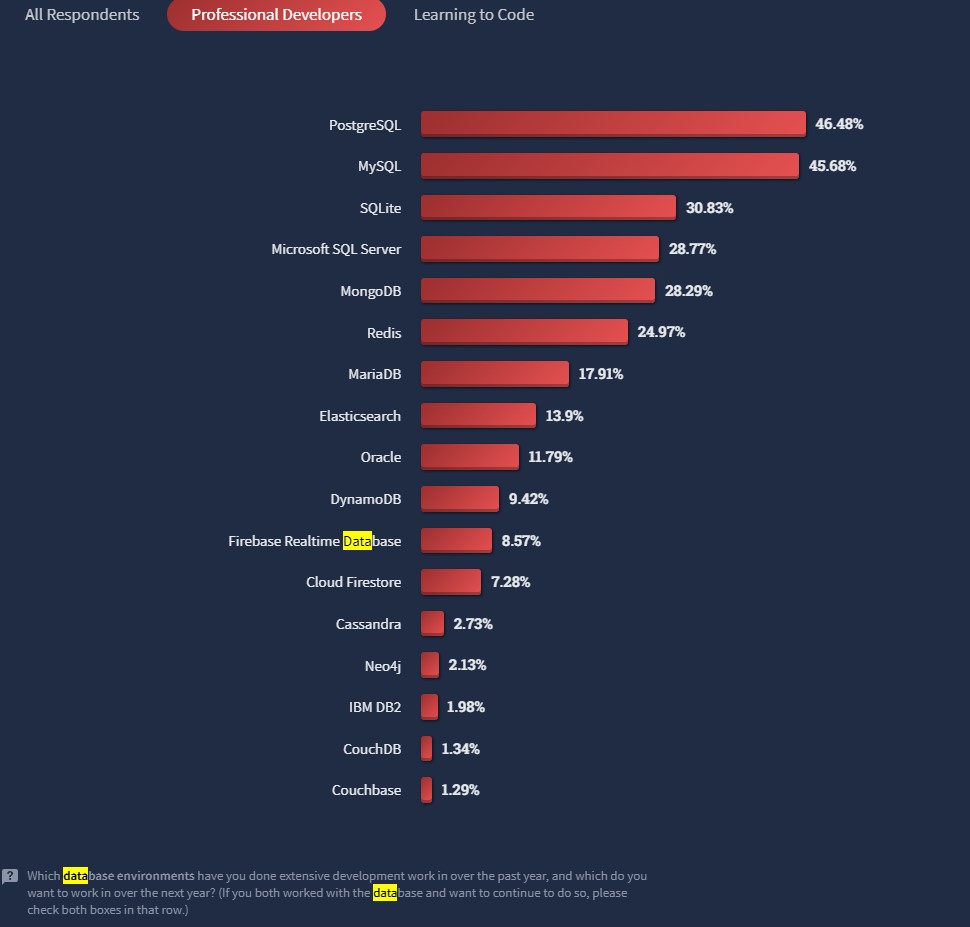Do you need a basic system for tracking inventory and sales? Or more advanced features such as Customer Relationship Management and financial reporting? Modern custom ERP systems can handle complex queries and requests, and can even generate personalized responses based on your customer data and previous interactions. As businesses face economic challenges during a recession, implementing a custom software or management system like CRM can assist in maintaining user relationships and streamlining operations.
The process of developing a customized customer relationship management system that is tailored to the individual goals and requirements of a business is known as custom CRM development. Defining the project scope, selecting critical features and functionality, and funding for the project are all aspects of the process.
Custom CRM System Development 2023: Process, Popular Frameworks, Trends
Many companies were attempting to create a platform that effectively connects businesses with their customers on a large scale, in a relevant context, and with a genuine exchange of value. As a business owner or manager, it’s important to have a customer relationship management (CRM) system in place to effectively track and manage customer interactions and data. According to data from users of the data science community platform Kaggle, the global CRM market is expected to reach $80.2 billion by 2025.
The first stage in custom CRM development is defining the project scope. Identifying the precise business demands and goals that the CRM system will serve, as well as the target audience and user base, is part of this process. The next stage is to determine the features and functionality the bespoke CRM system will require: important features and functionality.


Between 2020 and 2023, the number of searches for “how to build a crm” is projected to increase as more firms try to personalize their customer relationship management systems to better match their individual needs and goals. Some possible explanations for this surge of rising interest include:
- Customer relationship management is becoming increasingly important in today’s corporate world.
- Businesses are increasingly turning to CRM systems to help them better manage and track client interactions and relationships as customer expectations continue to rise.
- Digital transformation initiatives to climb. Custom CRM creation is becoming more popular as businesses seek to use technology to optimize operations and improve customer experiences.
Here are five critical factors to consider while designing a custom CRM system:
Custom CRM: System Development Process
We will walk you through the process of creating your own custom CRM system, from planning and design to development and deployment, not only in this article. Defining your goals and objectives is the first step in custom CRM development.

What do you want to accomplish with your system? Would you like to increase retention and loyalty? Or boost sales and revenue? By clearly defining your goals and objectives, you can ensure that even your system is tailored to meet the specific needs of your business. So this is the guide:
- Identify your target audience: On the one hand, you need to identify your target audience. Who will be using your CRM system? Will it be used by sales and marketing teams, customer service teams, or both? Understanding your target audience will help you design a CRM system that is intuitive and easy to use.
- Determine your budget and resources: CRM development can be a complex and time-consuming process, so it’s important to have a clear resource plan in place. How much money and time do you have available for custom CRM? What resources, such as staff, soft, and hardware, will you need to complete the project?
- Choose a development platform: There are a number of development platforms available for custom CRM development, such as Salesforce, Microsoft Dynamics, and SugarCRM. Each platform has its own unique features and capabilities, so it’s important to choose one that meets the needs and requirements of your business. For example with popular ChatGPT and our low–code platform, you can create a fully-featured CRM/ERP web app, CMS software, project management tool, or admin panel in minutes.
- Design and plan your CRM system: Once you have chosen a development platform, it’s time to design and plan how to build your CRM system. This includes determining the features and functionality you need, as well as the layout and user interface. A well-designed CRM system will be intuitive and easy to use and will help you achieve your business goals and objectives.
- Develop and test your CRM system: After you have designed and planned your CRM system, it’s time to start development. This involves building and integrating the various components of your CRM system, such as the database, user interface, and workflow processes. It’s important to thoroughly test your CRM system during development to ensure that it is stable and reliable.
- Deploy and maintain your CRM system: Finally, it’s time to deploy your CRM system.
Custom CRM Ideas: What to build in 2023
Next year, custom systems are expected to be in high demand in a variety of middle-size companies, including:
- E-commerce businesses: As online shopping continues to grow, e-commerce businesses will need CRM and ERP systems to manage their customer relationships, inventory, and finances.
- Service-based businesses: Service-based businesses, such as consulting firms and law firms, will need CRM and ERP systems to manage their client relationships and projects.
- Manufacturing businesses: Manufacturing businesses will need CRM and ERP systems to manage their supply chain, production, and sales.
- Healthcare organizations: Healthcare organizations will need CRM and ERP systems to manage their patient relationships, medical records, and billing.
- Government agencies: Government agencies will need CRM and ERP systems to manage their relationships with citizens, employees, and contractors.
Overall, the trend of increased searches related to custom CRM development in 2023 likely reflects the growing importance of customer relationship management in the modern business landscape and the increasing availability of tools and resources to support CRM development efforts.
How to Choose the Right Framework for Your Custom CRM Development Project
A survey conducted by the software company RedMonk found that JavaScript is the most popular programming language, with 66.7% of developers saying they use it regularly. In this section, we will look at the top eight frameworks for custom CRM development, including their benefits, and developer communities.

Let’s get started:
- Angular: open-source framework used for Single Page Application (SPA) development, developed by Google, testable and easy DOM manipulation, but may have performance issues and some complex features for new users.
- Vue: lightweight and fast framework with extensive documentation, combines features of Angular and React, free and open-source.
- React: JavaScript library for creating single-page or mobile applications, easy to learn, SEO-friendly, reusable components. So by the developer’s community is also wide-used to creating user interfaces.
- Bootstrap: a free and open-source library for creating web UI components, operates directly on code without a DOM, requires less code.
- Node: JavaScript run-time environment for server-side applications, cross-platform, used for building scalable network applications.
Popular framework options for CRM development not only include Java and React. But according to data from the Stack Overflow Developer Survey, React is the most popular front-end library, with 22.54% of developers saying they have used it in the past year.
So creating a system with React code is a great way to build a functional and reliable system that can be used to manage your business operations. By following best practices and leveraging the full capabilities of React, you can also find the most robust and reliable templates that meet the unique needs of your project.
Pros and Cons of JS Templates and Dashboards For Custom CRM Development
Before we will start with this part, it’s important to understand the basics of React. It also shows us the best way to create dynamic and interactive web applications. The first step in creating a system with React code is to decide on the type of system you need. The second, understand what is suitable for your CRM application, including online stores, SaaS platforms, CMS systems, financial dashboards, and project management tools. So we will explore the key features and benefits of templates, as well as their pricing and available demos.
Sing App
Sing App is a powerful and feature-rich React template that has proven popular among React developers worldwide. Its advanced functionality and wide range of supported applications make it a versatile choice for businesses looking to build custom CRM systems. With its strong focus on user management, eCommerce capabilities, and rich documentation, Sing App is well-suited for a variety of business needs. Whether you are looking to build an online store, SaaS platform, or financial dashboard, Sing App is worth considering as a potential framework for your custom CRM development project.
Lexa
Lexa designed a simple and beautiful admin template using Bootstrap. It has 6+ different layouts and 3 modes (Dark, Light and RTL). You can easily change any layout or mode by changing a few lines of code. With Lexa you can start small and large projects or update the design in an existing project. It’s very fast and simple, beautiful and elegant and offers the ultimate user experience.
Wafi
Wafi is a premium Bootstrap 4 Admin Template comes with 7 Unique Dashboards and 36 Layout Options. It is fully responsive, built with Bootstrap 4 Framework, HTML5, CSS3 and Sass. It has a huge collection of reusable UI components and integrated with the latest jQuery plugins. It can be used for all type of web applications like custom admin panel, Project management or Admin dashboard, Sales and eCommerce dashboard, Helpdesk etc.
How to Budget for Custom CRM Development: A Comprehensive Specification&Features Guide
Creating a budget for the custom CRM development project is a critical phase in the process. According to open and free-of-use Flatlogic’s research, the typical cost of a custom CRM system ranges from $50,000 to $100,000, depending on the project’s complexity and scope. Custom CRM development may be the best option in these cases. Another survey conducted found that 71% of businesses reported an increase in customer satisfaction after implementing a CRM system, but it also .
The cost of implementing a custom CRM will vary depending on the chosen approach and the specific requirements of the business. In addition to the initial development costs, businesses will also need to factor in ongoing maintenance, features, and support expenses.

So, let’s unlock the secrets of budgeting a successful technical specification. The following example is a technical specification for the non-existent, but similar to the real development and configuration of a CRM system for a business that provides logistics services. The system will be used to process data from f.ex. more than 5 websites and manage the entire process of receiving, handling, and completing requests.
Features such as lead and opportunity management, customer segmentation, and sales forecasting may be included. Data from our developer’s research in 2022 shows that the top three benefits of using a SAAS CRM system are improved customer relationships, increased sales and revenue, and streamlined business processes. Software as a Service CRM as a service (SaaS) is a cloud-based software solution that provides continuous access to CRM functionality and support without the need for installation or maintenance.
However, the price of a SaaS CRM can vary greatly depending on the features and customization required. In this graph, we will investigate the relationship between the cost of a custom SaaS CRM and the fees charged by developers to create it.

In addition to managing the process of receiving and completing orders, the SAAS CRM system will also be used to track the performance of the business and its employees. It will include features such as reporting and analytics, as well as the ability to set goals and track progress toward meeting them.
The typical workflow of the custom CRM system will be as follows:
- Receiving leads through advertisements on the website
- Lead processing by a manager
- Conversion of the lead to a customer status
- Entering additional data about the customer and their order
- Distribution of the customer to specialists who will complete the order
- Closing the order – completion in the fields and submission of reports
- Closing the order in the CRM after receiving payment and changing the status to “completed”
- In the context of this system, the terms “manager” and “operator” are interchangeable.
The system will also allow for the receipt of leads through the CRM and Whatsapp or Slack notifications. After a request is received on the website, it will immediately be forwarded to the CRM and channel or your social media integration, where it will be processed by a manager. The manager will enter additional data about the customer and their order and distribute the customer to the specialists responsible for completing the order.

Once the order is complete, the specialists will enter the necessary information into the fields and submit the reports. The order will then be closed in the CRM after payment has been received and the status has been changed to “completed.”
Overall, the purpose of this CRM system is to streamline and automate the process of receiving and completing orders, as well as to provide insight into the performance of the business.
Why Realtional Database Is the Best Option for Your Business
Because it stores and manages all client data and information, the database is an essential component of a custom CRM system. The database manages and stores customer data such as contact information, purchase history, and communication logs. It is also in charge of ensuring that the data is correct, consistent, and up to date.
The database is often developed and configured in bespoke CRM development to fit the specific demands and specifications of the business. Custom fields and data structures to store specific types of customer data, as well as custom database queries and reporting tools to extract and analyze client data, may be included.

Consider integrating your system with other systems: It’s critical to think about how the bespoke CRM system will interface with other platforms. You’ll need to create the database, which is used to store all the data associated with the system. You’ll also need to create the user interface, which is the part of the system that customers will interact with. You can use the components and templates provided by Flatlogic to quickly create the user interface. When choosing a stack, database, and technologies for a custom CRM, businesses should consider their specific needs and technical expertise.
Tips for Testing Custom CRM Systems during Development Process
Once your system is built, you’ll need to test it to make sure everything works as expected. You’ll also want to optimize it for speed and performance, as well as make sure it’s secure and compliant with industry standards. Once you’re satisfied with the SDLC process and testing, you can launch it and begin using it to manage your business operations.
Despite the potential benefits, implementing a custom CRM can be a challenging and complex process. As we mentioned before without careful planning and consideration of the potential pitfalls, businesses may find that their open-source CRM integration fails to meet their needs and achieves the desired results.
As businesses move increasingly online, the need for efficient custom CRM and ERP systems grows. While many developers are familiar with the full-stack development cycle, the low-code approach is becoming an increasingly popular option for businesses that need very quick, cost-effective solutions.
The difficulty of integrating cloud-based Enterprise Resource Planning (ERP) software with other systems via application programming interfaces is a major issue (APIs). Subscription fees can also add up over time, and some cloud-based solutions may not provide invoicing.
Fortunately, there are ways to build a fabulous CRM system on a tight budget in 2023. Here are some tips:
- Determine your CRM needs: The first step in building a CRM system is to assess your business needs and determine what features and functionality you require. This will help you narrow down your options and choose a CRM system that meets your specific needs.
- Explore free low-code options: There are a number of free or low-cost CRM systems available, such as HubSpot CRM, Zoho CRM, and Freshworks CRM. These systems offer a range of basic features, such as contact management, lead tracking, and sales forecasting, at no cost or for a low monthly fee.
- Consider open-source options: Another option is to use an open-source CRM system, such as SugarCRM or vtiger. These systems are free to use, but you will need to invest in the development and customization of the system to meet your specific needs.
- Utilize integrations: Many CRM systems offer integrations with other tools and platforms, such as email marketing, social media, and project management. Utilizing these integrations can help you streamline your workflow and save money on purchasing multiple tools.
- Look for discounts and special offers: Keep an eye out for special offers or discounts on CRM systems, such as limited-time promotions or discounts for nonprofits. These offers can help you save money on your CRM system.
Right now you understand how critical it is to have a customer relationship management system in 2023 as a business owner or manager to effectively track and manage customer interactions and data. However, off-the-shelf CRM systems may not always meet your company’s specific needs and requirements. By following these tips, you can build a fabulous CRM system on a tight budget. With a little research and careful planning, you can find solution that meets your business needs and budget.
About Flatlogic
Flatlogic Platform-based project allows for more customization and control over the system, which is a key difference between cloud-based third-party CRM solutions and a local copy with dynamic features. This, however, implies that the company will be responsible for system maintenance and updates.
- Custom CRM systems are an important component of modern business operations. They assist businesses in managing customer relationships, tracking sales, and streamlining communication.
- However, creating a custom ERP from scratch can be a daunting task, especially for those without extensive web development experience. In this article, we will discuss some of the best open-source projects that can assist you in developing a custom CRM system for your company.
- Whether you are an experienced developer or just getting started, these projects provide a wealth of resources and tools that can make the process of developing a CRM easier and more efficient.

For example, our product company Flatlogic is a web development company that provides a library of components and templates to help your project get started from scratch or you can use our new feature: GPT-3, and open AI integration with our platform to build MVP by yourself with right stack in minutes.
Creating an ERP system with React code and Flatlogic Platform is a great way to build a reliable system that can be used to manage your business operations. By understanding the basics of React and Flatlogic, you can quickly set up your development environment and begin building your system. With careful planning and testing, you can launch your system and start using it to manage your business operations.
Check out the rest of the articles in this series for a more in-depth look at specific CRM systems and how they can help your business:
- Scaling Your SaaS: How AI-Powered Development Reduces Technical Debt
- Builder.ai Collapse: Startup Red Flags and How to Avoid Them
- Introducing Flatlogic Community Template: Free, Core Features, Simplified License
- Top 5+ Benefits of Using an AI Software Engineer for Startups
- Native OpenAI Integration to Flatlogic AI Engineer
Comments